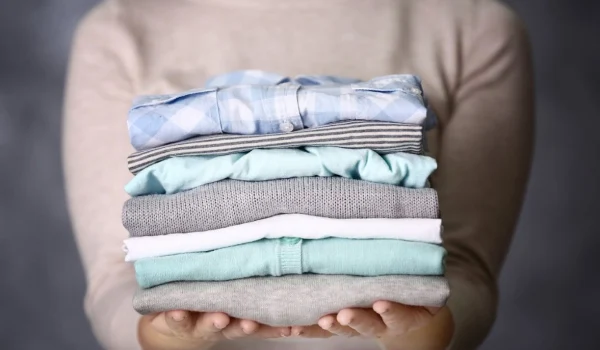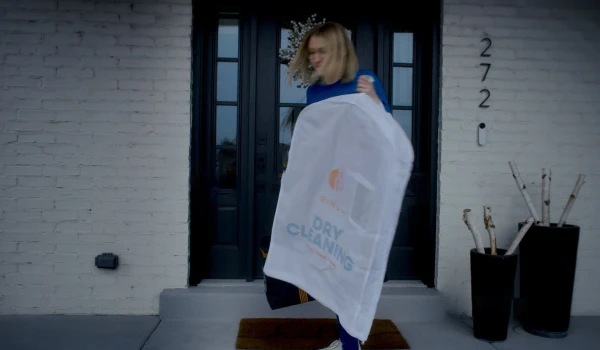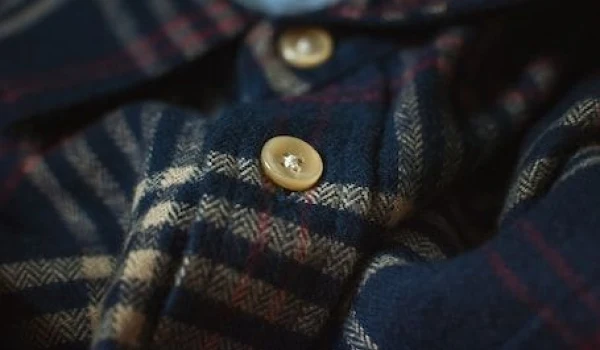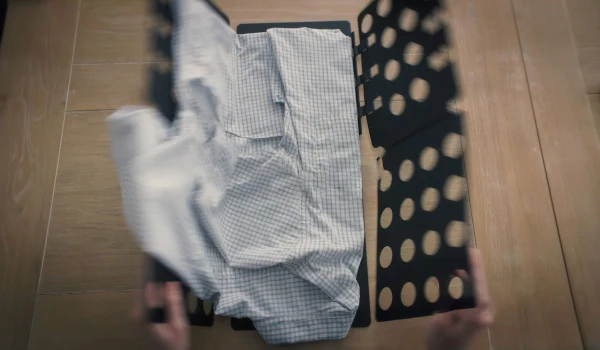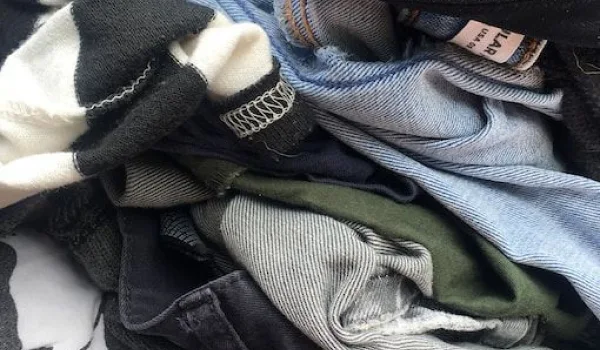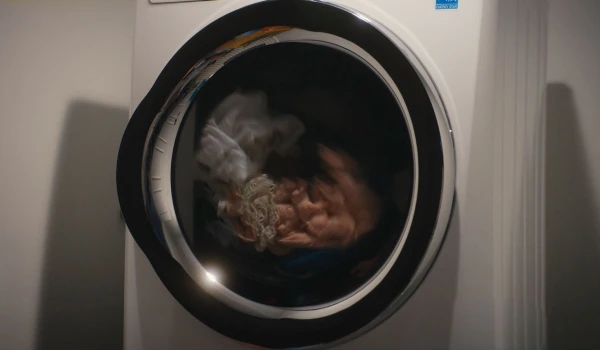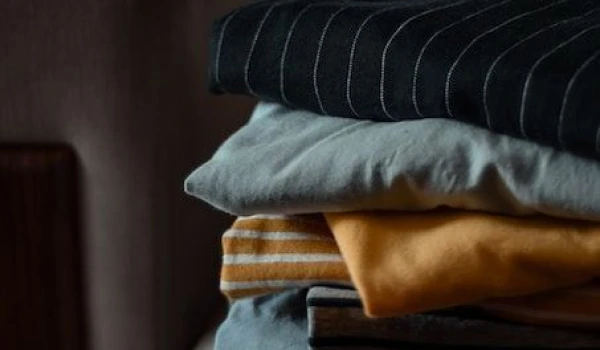Topics
Popular
See all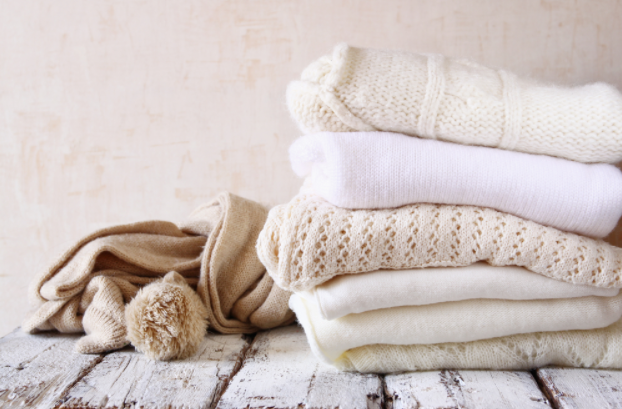
Learn what's best for cashmere items and how to care for them.
Soft, luxurious, and high maintenance—these are the first few of the things that come to mind when people think of cashmere. While this delicate fabric does require a bit of attention, don’t let that stop you from upgrading your wardrobe with a few cozy cashmere pieces. If you clean, dry, and store your cashmere properly, it’s easy to keep it in excellent shape.
Take a deep breath and let us guide you through the process—it’ll be pain-free, we promise.
Washing and drying: by hand, machine or professional
Yes, it’s possible to clean your cashmere at home. Whether you’re washing a sweater, dress or scarf by hand, these steps will help you keep your cashmere fresh.
- Fill your basin with cold water, and add a mild detergent such as Woolite, baby shampoo, or dish soap.
- Let your cashmere soak in the basin for five minutes, before rinsing thoroughly.
- Take out your clothing and fold it up into a ball to get the excess water out. Don’t wring your cashmere, which can stretch out the delicate material.
- Place your clothing flat on a towel, and roll it up to remove any remaining water.
- Lay your clothing on a drying rack. If you don’t own a drying rack, place it between two towels to dry.
Don’t have the time to wash by hand? This might surprise you, but you can use a washing machine to clean cashmere. Put the garment in a laundry or mesh bag before you place it in the machine, and select the gentle cycle on cold water. If you’d rather have a professional do the job, dry cleaning is always a good option for your cashmere.
At Rinse, our Dry Cleaning and Wash & Fold services are conveniently available 7 days a week. Visit our homepage to create your free account and schedule your first pickup. We have decades of experience cleaning cashmere!
Care tip: Ideally, you should clean cashmere after wearing it two to three times. In between washings you can remove any fabric pills with a cashmere comb or bristled garment brush. Pills don’t mean the cashmere you purchased is cheap—they’re simply a sign of friction from wear.
Stain removal: food, drinks and cosmetics

No matter how careful you try to be, you might end up with a small stain on your sweater. Your initial urge might be to panic, but you can keep your cool—and your cashmere—by following our handy stain removal advice.
- Makeup or grease-based: First blot the stain. Then, pre-treat by soaking the cashmere in mild shampoo.
- Chocolate: Dip a cloth in liquid detergent and lightly rub the stained area, taking care not to scrub too hard.
- Red wine, tea, or coffee: Gently rub the stain with a cloth dipped in a mix of cold water and dish-washing liquid. Avoid soap or machine detergents, which can set red wine stains rather than remove them.
Afterward, rinse your garment in cold water and let it dry on a rack. Your cashmere should be as good as new!
Storage: long-lasting care
To keep your cashmere looking its best, keep these tips in mind.
- Don’t hang your cashmere sweaters or dresses. A hanger will distort the shoulders, and the garment will lose its original shape.
- Instead, fold your cashmere and keep it in a drawer or on a shelf away from moisture.
- When you’re putting your cashmere away for the season, place it in a breathable garment bag or storage box in a cool, dry area. To prevent wrinkles, you can wrap each piece of cashmere clothing in acid-free tissue paper.
- Remember to make sure your cashmere is washed before you store it for the offseason. Moths are attracted to human scents, so you’ll want to get rid of any perfume or food odors prior to storage. As an added precaution, place some cedar wood moth repellents with your cashmere.
Now that you’re fully equipped to care for cashmere, go ahead and stock up on this comfy and luxurious fabric in time for sweater season. You’ll look good and feel good!
Photos: Tamarcus Brown, Ann Haritonenko / Shutterstock.com, tomertu / Shutterstock.com

It’s always exciting to add a new piece to your wardrobe but once you’ve worn it, you need to know how to wash it. Is it a “Hand Wash” or “Dry Clean Only” item? Does it lay flat or hang to dry? Different fabrics require different types of treatment.
Clothing labels are the first point of reference when it comes to clothing care—the little tag on your favorite sweater provides helpful washing instructions to ensure your cherished item gets the proper care it needs. Let's have a look at a few common fabrics that should be dry cleaned professionally and which ones you can take care of in your own laundry room.
Fabrics that need professional cleaning: silk, velvet, wool, leather and more
![]()
If you've finally scooped up that vintage leather jacket you've been eyeing all season, you'll want to make sure it lasts. For a quick fix to take care of any stains, start by scraping off the residue, but make sure to keep it away from water, which can damage the material. After that, trust it to an experienced dry cleaner for long-term maintenance. The same rules apply for other delicate pieces like your silk scarf. Defer to the professionals when it comes to taking care of fragile fabrics.
Besides silk and leather, other upscale fabrics—including chiffon, velvet, and merino wool—should be brought to a professional cleaning service to preserve their natural luster and form. You'll also want to entrust suits and most professional wear—especially wool pieces—to the care of a professional.
Fabrics that can be washed at home: cotton and knits

Just because an item can be machine washed doesn't mean that you should subject it to a hot soak—heat can cause colors to fade. Cotton can be washed in warm or cool water with regular detergent. Synthetic fabrics such as polyester and nylon are safe to wash in a machine using in warm water on either the delicate or permanent press cycle, but take care when drying these items to avoid permanent wrinkling.
More luxurious pieces such as cashmere blends should always be washed by hand in cold or lukewarm water with gentle laundry soap. Don't wring the fabric as it may ruin the material. Instead, take care to dry flat or use a drying mesh rack to help the clothing keep its shape. If you're pressed for time, place the item in a laundry bag and select the most delicate cycle on your machine to mimic the hand wash process when laundering at home.
If you're ever unsure about your clothes, check the label. Our handy clothing label guide breaks down common symbols and instructions so you can avoid any laundry mishaps.
Or if care label instructions have you feeling overwhelmed, you can leave the cleaning to us. We offer Wash & Fold, Dry Cleaning, and Hang Dry to ensure your clothes are taken care of appropriately. Sign up for free and schedule your first pickup at your earliest convenience.
Care guide for denim: the real deal about at-home care

Contrary to popular belief, denim isn’t the sort of fabric you can put through the ringer—or in this case, the dryer. Despite being a very durable material, proper jean care is actually quite particular. Most jeans should be washed inside-out in cold water and hung to dry, although some high-end denim would even benefit from dry cleaning. And when it comes to raw denim, which means denim in its purest, non-distressed form, the best washing practice is not to wash at all. If you find yourself with a stain, simply wipe it away with a damp cloth, or take it to the experts for extra help.
Care guide for special items: accessories and embellishments

There are certain pieces in your closet that require special attention like that suede fringed dress or straw sun hat. Use a damp cloth to wipe away dirt, dust or sweat stains from your hats, and be sure to keep them in a cool, dry spot rather than out in the sun to avoid color damage. The embellishments on that dress can make it extra difficult to care for. Most sensitive details like fringes and sequins require hand washing in a gentle detergent, while embroidered pieces should be machine washed inside-out and placed in a mesh laundry bag on the delicate cycle.
When in doubt, visit your trusted dry cleaner for proper care of any attire. Most modern services offer a full menu of options to suit all your clothing care needs, but if your neighborhood cleaner doesn't have the resources in-house, they'll likely know about a great specialty cleaning service in town and can outsource your item to ensure it's well-treated.
Photos: Irene Lasus, Matthew Wiebe, Kasia Serbin, Eranicle, Alex Blăjan
Readers also liked:
1.) Your Complete Guide To Caring For Cashmere

Introduction
Does the musty and mildew-ridden smell of towels make you sick? You're on the same page as us.
Many people believe the only way to get rid of this smell is to throw out the towel itself. While that's the last resort scenario, it doesn't have to be your first plan of action.
Are you wondering how to get the mildew stench out of towels and avoid having to buy new towels every other month? Better yet, how do you avoid getting the towels smelly in the first place?
Here's Why Towels Might Get Smelly
You take the towels out of the dryer, and they smell stinky. It almost seems like a mystery why towels would end up with a mildew or musty smell.
We went Sherlock Holmes on this issue and found the following reasons for foul-smelling towels:
-
Improper Drying: We've all made the rookie error of leaving towels in the washer or dryer overnight. "I'll take them out in the morning," is what we say, all cozied up in our beds. But what happens is the towels absorb the moisture and create a breeding ground for bacteria.
-
Humidity and Warmth: Even if you take the towels out immediately, improper storage can result in a musty smell. You want to avoid putting the towels in a poorly ventilated area. The ideal location gets a good amount of air circulation.
-
Overcrowding: How wonderful would it be if we all had huge closets with plenty of circulation and space? Unfortunately, this is not a luxury many of us have. As a result, we tend to cram as many towels as possible in one space, which can cause them to retain moisture and pick up odors.
-
Hard Water Deposits: Sometimes, the issue is not your washing regimen but the water itself. Hard water contains elevated levels of magnesium and calcium, which can leave deposits on the towel fibers. The resulting smell can be very unpleasant.
-
Only Using Detergent: We're not denying the efficacy of a detergent in cleaning the towels. But it's not always enough. Often, adding a dash of vinegar with a few drops of a scented essential oil can do wonders for your towels.

How to Get Mildew and Musty Smells Out of Towels
Now that we've addressed the root causes, let's discuss how to get a musty smell out of towels. For this method, you'll need the following materials:
-
White vinegar
-
Essential oils (optional)
-
Baking soda
-
Detergent
Now, follow these steps to get your towels smell-free:
Step 1: Run One Cycle With Vinegar
Place the towels in the washing machine and run a cycle using white vinegar instead of detergent. Due to its acidic nature, vinegar helps remove mildew or bacteria that may have accumulated on the fabric.
Most washing machines have a compartment for fabric softener. That's where you should put the white vinegar.
If your washer doesn't have this compartment, there's no need to worry. Put the towels in the washer tub and let it fill up with warm water. Then, add a cup of white vinegar to the wash cycle.
Step 2: Run a Second Cycle with Detergent or Baking Soda
For the second cycle, fill the detergent compartment with your regular detergent. If you have a preferred essential oil scent, such as lavender or citrus, add a few drops to the detergent.
Alternatively, you can add half a cup of baking soda to the washer tub and let the cycle finish with warm water. Baking soda is a deodorizer, which means it removes odors from fabric.
Step 3: Dry Them Properly
As already mentioned, proper drying is key to keeping musty odors away.
Now it's time for the towels to go to the dryer. Tumble dry the towels on low heat and run the dryer until they are fully dry.
The second method you can opt for is line drying. It's an eco-friendly way to dry your towels, and it helps keep them smelling fresh. Place the towels outside on a line or balcony rail, and let them air dry in the sun. Make sure to turn them over after a while to ensure even drying.
There you have it! Fresh and pleasant-smelling towels.
Step 4: Store the Towels
Proper towel storage is of utmost importance. If you get this part right, you won't have to deal with stinky scents.
Remember, do not put the towel in the storage closet immediately out of the washer. Dry them first.
Second, do not put too many towels in the closet. Storing too many damp towels together is an open invitation to mildew.
Third, clean the closet before storing the towels. Sometimes, the smell can arise from insect droppings or dust in the cupboard rather than mildew.
Last but not least, if your towels have visible signs of mold, don't try to salvage them. Keeping and using these towels is a health hazard. Discard them right away.

Preventive Tips to Avoid Bad Towel Smells
Taking a 3-step approach to washing your towels every time they have to go into the wash can be a bit tiring. Why not avoid smelly towels in the first place? Here are some tips to help you out with this issue:
-
Avoid Fabric Softener: We know you love the smell. But fabric softener has to go. It leaves a residue on the fabric that doesn't allow it to breathe, accumulating sweat, dirt, and mildew. The residue also accumulates moisture, which further increases mildew growth. You can use dryer sheets or dryer balls instead to get the towels to come out fluffy.
-
Dry Properly: After washing, hang the towels up immediately. Give them a good shake to get rid of excess water, and then hang them out in direct sunlight or around a heat source. Do not fold them while they're still wet, as this will trap moisture and increase the chances of mildew growth.
-
Wash Regularly: Ideally, you should wash your towels every week or after 5 to 6 uses. If you use terry towels, do not wash them with other clothes as they will snag or pull. Always follow the care instructions on the labels when it comes to washing towels.
-
Clean the Washer: Over time, washing machines can get filled with gunk and residue from detergents, fabric softeners, and other items. These can build up on your towels if you're not careful. Wipe your washing machine on the inner side with white vinegar on a microfiber cloth.
-
Use the Right Detergent: Low-quality detergents leave a sour smell on your towels. Stick to high-end detergents like Persil and Tide. They contain enzymes to remove stains and dirt from the material without making it stinky.

Keep Them Fresh!
No one wants moldy towels, and stinky towels certainly won't make you feel clean or refreshed. Now that you know how to get the unpleasant smell out of towels, we recommend following this multi-step routine regularly.
Alternatively, just avoid getting your towels stinky by drying them immediately after washing, using a heavy-duty laundry detergent, not overcrowding your linen closet, and airing your towels out in the sun every once in a while.
If that seems like too much work, you can always get help from a laundry service, such as Rinse. The best part about Rinse is that we come to you and pick up and deliver your laundry and dry cleaning– whether it's your favorite suit, athletic gear, or towels.
You can rest assured that your towels will come back smelling fresh and looking great.
Contact us at Rinse today to see our skill in action.

Have laundry or dry cleaning to do?
Rinse picks up, cleans and delivers 7 days a week. Amazingly awesome. Ridiculously simple.
Rinse Drop
We offer pickup and delivery if you can’t be present between 8pm and 10pm.
Our Valet will pick up or deliver your order to your doorstep or concierge, at which point you’ll receive a text with a photo showing where your items were left.
You can enable Rinse Drop on any (or all) of your orders.





